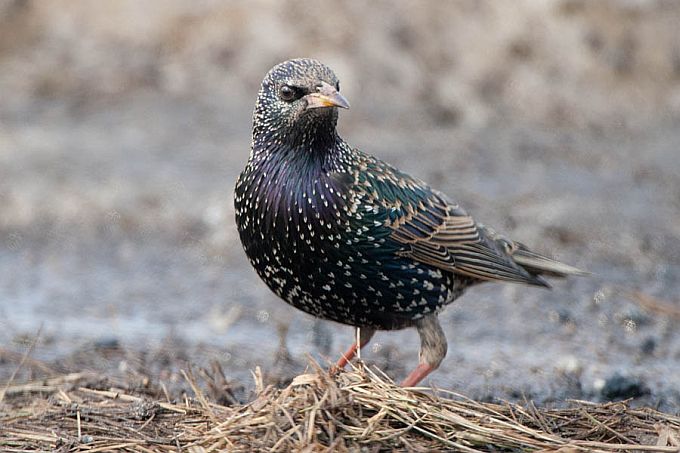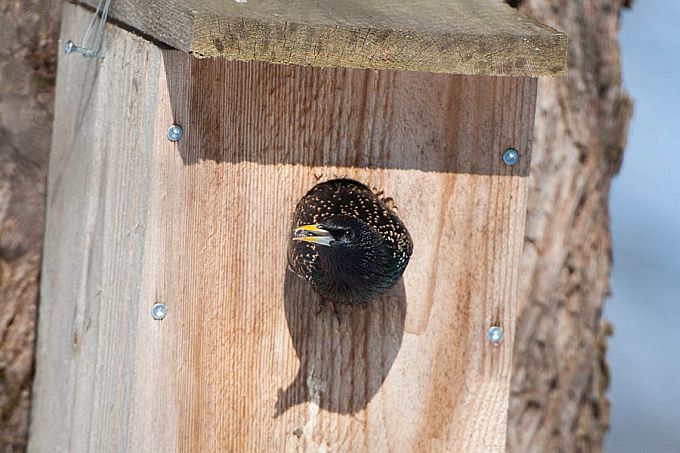Starling Kuldnokk Sturnus vulgaris
The first wave of arrivals is mostly made up of male birds that have already nested here earlier. The day migrants are easily noticeable. It is known that starlings are extremely true to their nesting sites. The arrivals look up their familiar nestboxes from the previous year and as a rule they also stay there to spend the night. They sing to show the presence of the owner but otherwise they still lead a “bachelor’s life“.
We can expect the females within a couple of weeks; their arrival depends on winds and weather conditions favourable to migrants.
The adults usually start cleaning the nestbox from trash that has gathered there together. The ground in the familiar surroundings is free from snow, there is food to find and one or two capricious snowy day will not force starlings to fly south of the snow line.
The springtime exterior of starlings is beautiful with the golden beak, blackish plumage that in sunlight shows iridescent metallic green and purple hues; short-tailed birds, and note the pink legs of starlings. Body length some twenty centimetres, weight seventy-eighty grams.
Are there differences in the looks of the adults? A pair busy in one’s home garden can be studied quite closely with binoculars at hand.
One should pay attention to the lemon-yellow beak: the stem of the lower half of the male’s is bluish-grey (see Arne’s photo at the end of the text), that of the female pinkish. Even more attentively the eyes of the pair should be examined: the eyes of the male are dark brown, the brown eyes of the female are circled by a narrow yellowish-white eye ring – always interesting to know.
In case you have thought of crafting and setting up a nestbox or even a couple of them in your home yard together with the younger in the family it is not too late at all. Usually new nest sites are accepted joyfully by the birds. Starlings sometimes nest in quite strange places near our houses because the accommodation shortage is great.
The number of nesters varies quite widely – from a hundred fifty thousand to a quarter of a million nesting pairs.
The arrival of starlings during the last week: LINK
Starling




